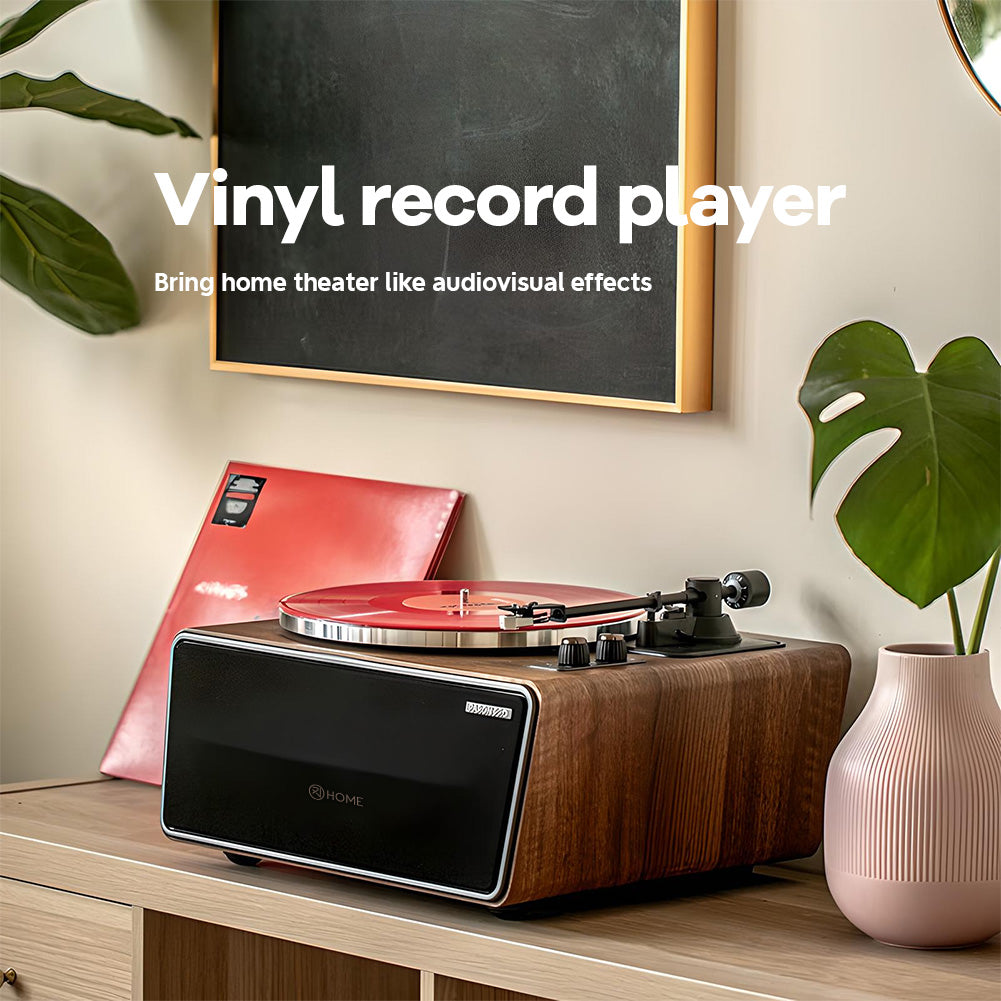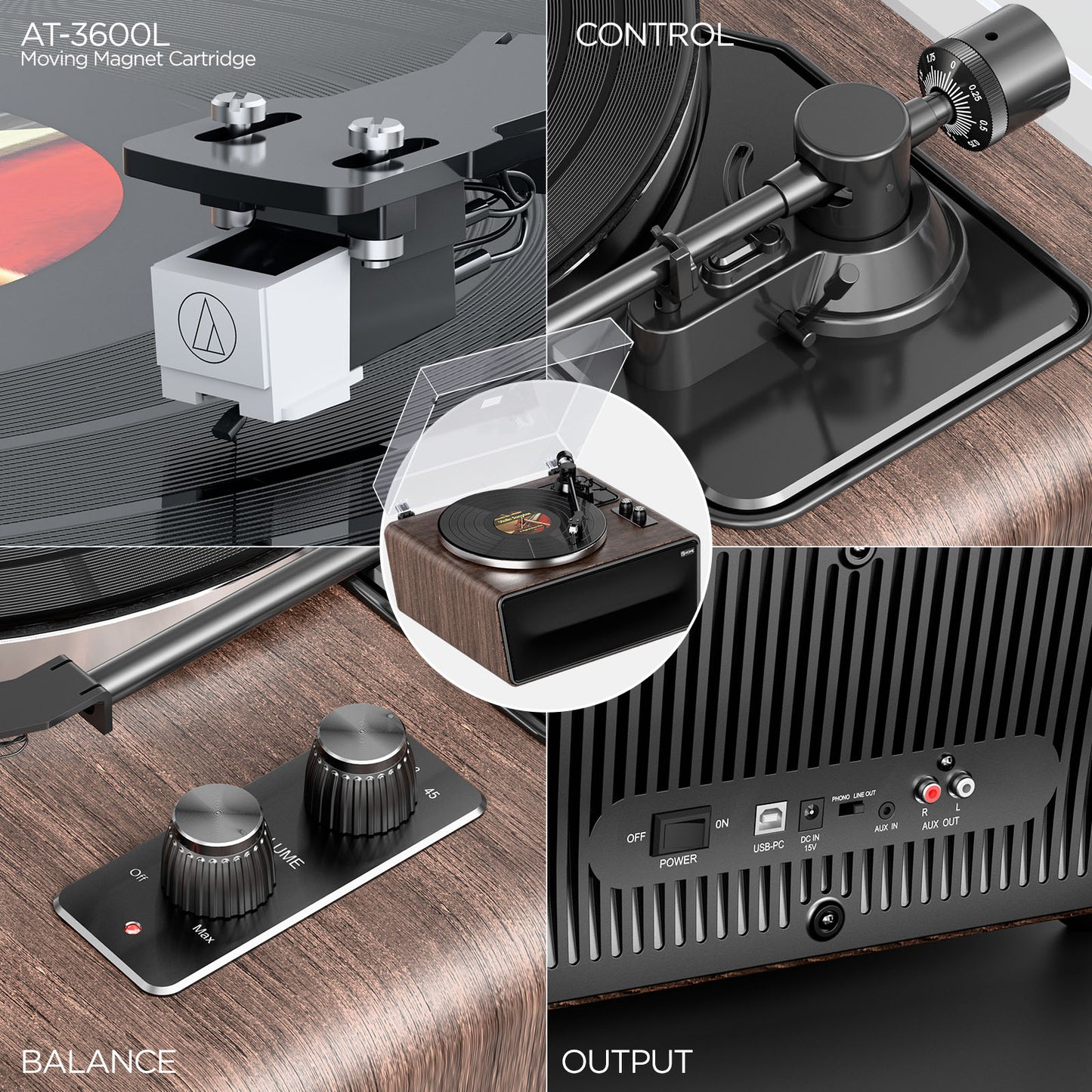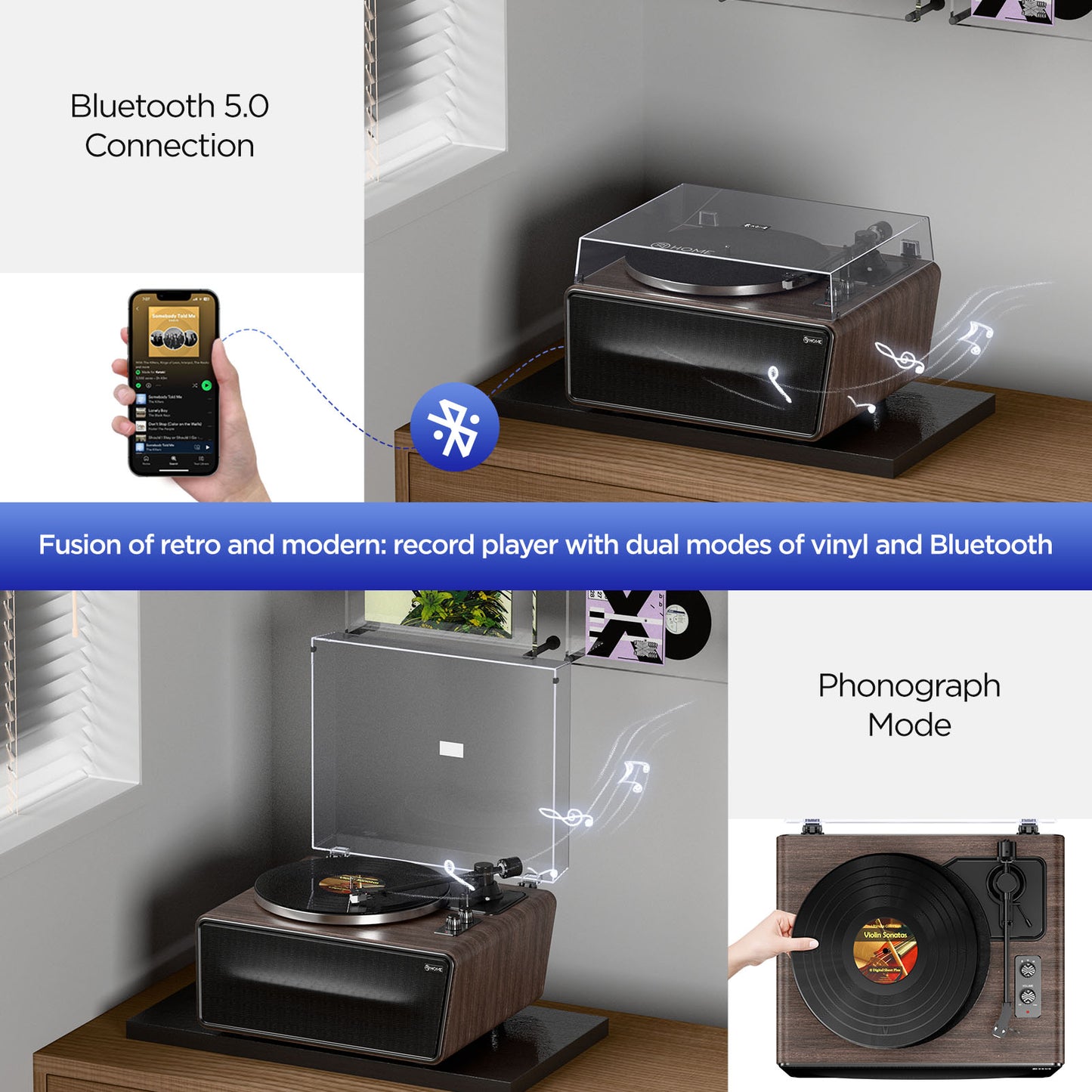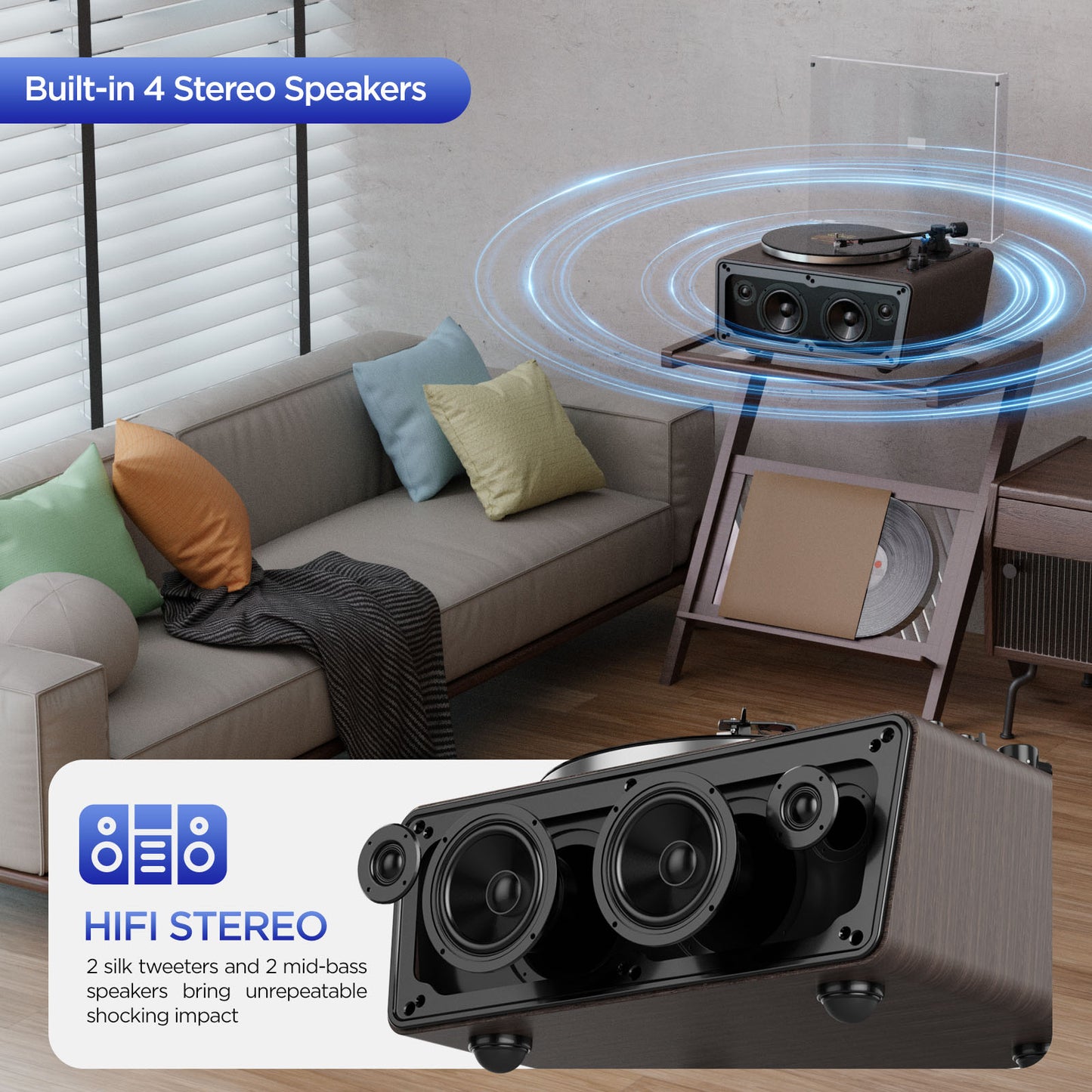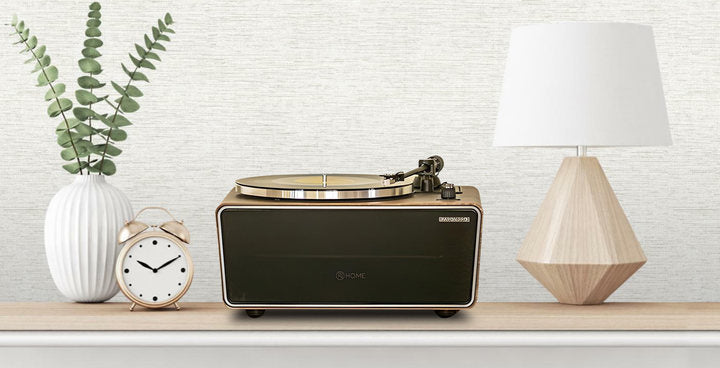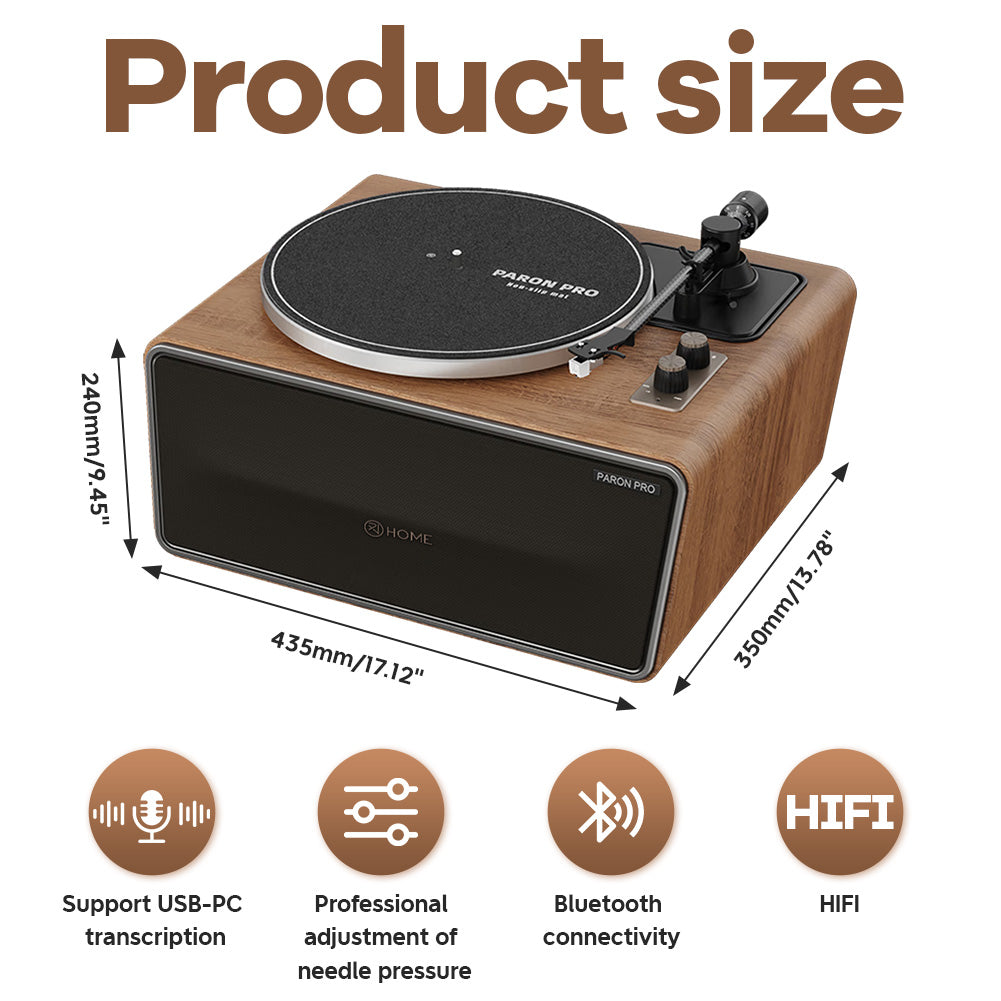
How to Tell If Your Vinyl Record Player Needs Repair
Share
There are few things more frustrating for a vinyl enthusiast than sitting down to enjoy a record only to be met with silence, distortion, skipping, or a turntable spinning at the wrong speed. While turntables can seem complex, many common issues can be resolved with simple setup adjustments or routine maintenance. Before assuming a costly repair is needed or rushing to replace your player, it's crucial to systematically troubleshoot the symptoms. This guide will help you diagnose common turntable problems related to speed, sound, and tracking, distinguishing between user error, basic upkeep, component wear, and genuine malfunctions that might require professional attention, empowering you to make informed decisions in 2025.

Symptom: Speed Issues (Too Fast, Too Slow, Inconsistent)
Incorrect playback speed is a common and jarring issue. If your records sound like the Chipmunks or a dirge, investigate the potential causes. First, double-check the obvious: ensure you've selected the correct speed setting (33⅓ RPM for LPs, 45 RPM for singles) on your turntable. For belt-drive turntables, the most frequent culprit is the rubber belt itself. Over time, belts can stretch, become brittle, or slip off the motor pulley or platter bearing. Visually inspect the belt for damage or slack. Try cleaning the belt and the surfaces it contacts (motor pulley, inner platter rim) with isopropyl alcohol. If it's loose or damaged, replacing the belt is inexpensive routine maintenance. Ensure the platter is seated correctly on the spindle and bearing. To verify the speed accurately, you can use a strobe disc and light, or a smartphone RPM app. Minor speed adjustments might be possible via small screws near the motor on some turntables (consult your manual). Repair is likely needed if replacing the belt doesn't resolve instability on a belt-drive model, or if you experience significant, persistent speed fluctuations on either belt or direct-drive turntables, as this often points to issues with the motor or the electronic speed control circuitry requiring professional diagnosis.
Symptom: Sound Problems (No Sound, Low Volume, Distortion, Hum)
Audio path issues can manifest in several ways. If there's no sound or very low volume, start with the basics. Check all connections meticulously: turntable RCA cables to the phono preamp (or amplifier's phono input), preamp to amplifier, amplifier to speakers. Ensure the phono preamp is engaged (either the built-in one on the turntable/amp, or the external unit is powered on and selected). Verify you've selected the correct input on your amplifier. Check the stylus – is the cantilever (the tiny tube holding the diamond tip) intact, or is it bent or broken? Ensure the tiny wires connecting the cartridge to the headshell are secure.
If the sound is distorted, fuzzy, or unclear, the prime suspect is often the stylus. Is it dirty? Try cleaning it carefully with a dedicated stylus brush. Is it worn out? Styli have a finite lifespan (from a few hundred to around 1000 hours depending on type and quality) and a worn stylus sounds bad and damages records. Inspect it with magnification if possible. Incorrect tracking force (too heavy or too light) can also cause distortion. Improper cartridge alignment is another common cause, leading to mistracking and distortion, especially towards the inner grooves. Lastly, ensure the record itself isn't excessively dirty or damaged.
A persistent hum or buzz is often related to grounding issues. Most turntables have a separate thin ground wire; ensure this is securely connected to the ground screw terminal on your phono preamp or amplifier. Poor quality or poorly shielded RCA cables can also pick up interference. Try repositioning cables away from power cords. Ensure the turntable isn't placed too close to other electronic devices that might cause interference. Understanding ground loops can help diagnose trickier hum problems. Repair is likely needed if basic troubleshooting fails – persistent distortion despite a clean, good stylus and proper setup could indicate issues with the cartridge itself, tonearm wiring, or internal preamp components. A persistent hum that doesn't respond to grounding checks might signal an internal component failure.

Symptom: Tracking Issues (Skipping, Skating, Repeating Grooves)
When the stylus jumps out of the groove (skipping forward) or slides across the record (skating), it's usually a setup issue related to the tonearm and stylus interaction.
Ensure the turntable is placed on a perfectly level surface – use a small bubble level to check. The most common cause is incorrect tracking force. Too little force, and the stylus won't sit securely in the groove, leading to skipping, especially on louder passages or minor warps. Too much force can cause poor sound and accelerate record wear. Use a stylus tracking force gauge (an essential, inexpensive tool) to set the force accurately according to your cartridge manufacturer's recommendation. Incorrect anti-skate settings (the mechanism counteracting the tonearm's natural tendency to pull inwards) can also cause skipping or channel imbalance. A common starting point is to set anti-skate to match the tracking force value. A dirty or damaged stylus can also fail to track properly. Always test with a record known to be flat and in good condition, as severely warped records can cause skipping even on well-set-up turntables. Repair is likely needed if tracking problems persist despite verifying levelness, correct tracking force, appropriate anti-skate, a clean stylus, and a flat record. If the tonearm feels stiff, doesn't move freely horizontally or vertically, or exhibits excessive play, this could indicate tonearm bearing damage, which requires professional service.
Component Wear vs. Malfunction (Analysis & Reality Check)
It's crucial to distinguish between routine wear and actual component failure. Styli wear out – this is expected. Replacing a worn stylus is regular maintenance, like changing tires on a car, not a "repair" in the typical sense. Similarly, belts on belt-drive turntables stretch and perish over time and require periodic replacement. These are consumable parts. Cartridges themselves can eventually fail, but it's less common than stylus wear. Motor or electronic failures are relatively rare on well-made turntables but do happen and usually necessitate professional intervention. An important reality check, particularly for budget turntables (especially sub-$150 all-in-one units), is the cost-benefit analysis of repair. The cost of diagnosis and repair by a qualified technician can easily exceed the original price of the turntable, making replacement a more economically sensible option (Non-PC Reality: Some Gear Isn't Worth Fixing).
When to Seek Professional Help
If you've diligently worked through the basic troubleshooting steps for your specific issue – checking connections, cleaning components, verifying setup parameters like tracking force and levelness – and the problem persists, it might be time to consult a professional. Seek help if you suspect internal component failure (persistent hum unresponsive to grounding, motor issues, major speed instability), tonearm bearing problems, or if the turntable has suffered obvious physical damage. Finding qualified turntable technicians can sometimes be challenging depending on your location, so look for reputable audio repair shops with experience in analog equipment.

Conclusion: Informed Listening, Continued Enjoyment
Experiencing problems with your turntable can be disheartening, but many common issues have simple solutions rooted in proper setup and maintenance. By systematically troubleshooting symptoms related to speed, sound, and tracking, you can often identify and resolve problems yourself. Understanding the difference between routine wear (stylus, belt), setup errors, and genuine malfunctions helps you determine when basic care is sufficient and when professional repair might be necessary – or when replacement is the more practical path, especially for budget equipment. Taking the time to understand your turntable empowers you to make informed decisions, ensuring you can continue enjoying the unique experience and connection that vinyl records offer. Maintaining your setup is part of appreciating the journey (for more insights on caring for home electronics and making smart choices, consider exploring XJ-HOME).


